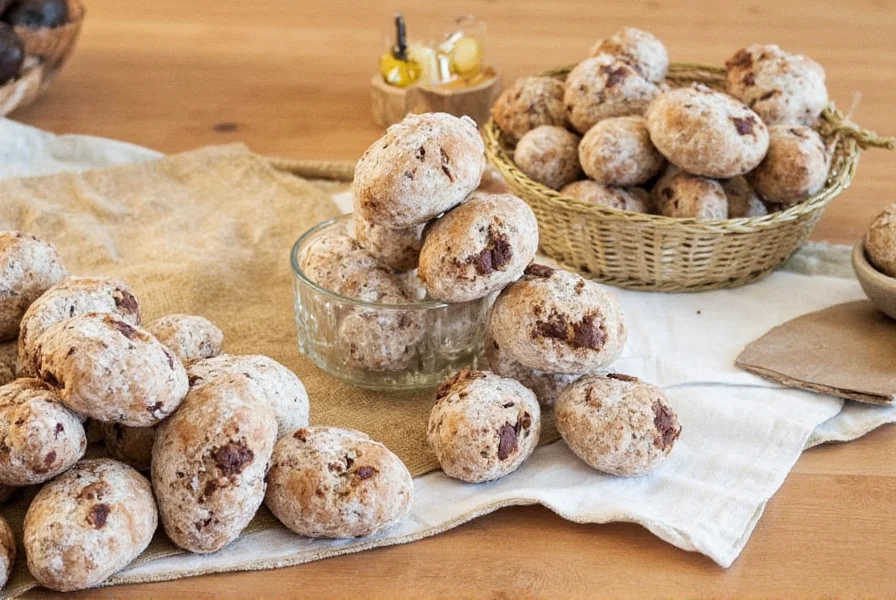When searching for "nutmeg bakery," many consumers seek authentic information about what makes this establishment distinctive in today's competitive bakery landscape. Understanding the fundamentals of artisanal baking helps contextualize what customers can reasonably expect from such establishments.
The Craft Behind Artisanal Baking
True artisanal bakeries like Nutmeg Bakery distinguish themselves through time-intensive processes that prioritize flavor development over mass production. The bakery's sourdough starters often ferment for 24-72 hours, allowing complex flavor profiles to emerge naturally without artificial enhancers. This dedication to traditional methods results in bread with superior texture, shelf life, and digestibility compared to commercially produced alternatives.
Signature Offerings and Seasonal Specialties
Nutmeg Bakery's product rotation typically features European-inspired breads alongside innovative seasonal creations. Their morning menu commonly includes:
| Product Category | Regular Offerings | Seasonal Variations |
|---|---|---|
| Breads | Sourdough, Rye, Whole Grain | Pumpkin Spice Harvest Bread, Cranberry-Walnut |
| Viennoiserie | Croissants, Pain au Chocolat | Lemon-Raspberry Danish, Maple Pecan Rolls |
| Desserts | Tarts, Éclairs, Fruit Galettes | Apple Crumble Tart, Persimmon Pudding |
What sets establishments like Nutmeg Bakery apart is their commitment to ingredient integrity. Many artisanal bakeries partner directly with regional farmers for flour, dairy, and seasonal produce, creating a transparent supply chain that benefits both producers and consumers.
Understanding Bakery Operations
Professional bakeries operate on demanding schedules, with production typically beginning between 2:00-4:00 AM to ensure fresh products for morning customers. The baking process involves precise temperature control, fermentation monitoring, and skilled hand-shaping techniques that cannot be fully automated without compromising quality.
When evaluating local bakeries, consider these markers of quality:
- Visible fermentation process (bubbles in dough, irregular crumb structure)
- Minimal ingredient lists without artificial preservatives
- Staff knowledge about baking processes and ingredients
- Products that maintain quality through the day without excessive moisture
Community Impact of Local Bakeries
Establishments like Nutmeg Bakery often serve as community hubs that extend beyond simple retail spaces. Many participate in local food initiatives, support school programs with baking demonstrations, and provide employment opportunities with skill development. The economic impact of such businesses typically multiplies within the local economy at rates higher than chain establishments.
What Customers Should Reasonably Expect
Understanding the realities of artisanal baking helps set appropriate expectations. Products from bakeries like Nutmeg Bakery typically:
- Have shorter shelf lives than commercial products (3-5 days for bread)
- Vary slightly between batches due to natural fermentation
- May not be available in consistent quantities throughout the day
- Command premium pricing reflecting ingredient and labor costs
These characteristics aren't drawbacks but rather indicators of authentic artisanal production. The slight variations between batches demonstrate the living nature of the fermentation process rather than inconsistency in quality.
Evaluating Bakery Quality Objectively
When assessing establishments like Nutmeg Bakery, focus on objective quality markers rather than marketing claims. True artisanal bakeries typically:
- Display ingredient transparency with visible sourcing information
- Offer samples of bread to assess texture and flavor
- Have staff trained in baking science and techniques
- Maintain clean but flour-dusted workspaces showing active production
The most reliable indicator remains the bread itself—properly made sourdough should have an open crumb structure, complex flavor with balanced acidity, and a crisp yet flexible crust that doesn't become soggy quickly.
Frequently Asked Questions
What makes Nutmeg Bakery different from commercial bakeries?
Nutmeg Bakery distinguishes itself through traditional baking methods using natural fermentation processes, locally sourced ingredients where possible, and handcrafted production techniques that prioritize quality over quantity. Unlike commercial operations, they avoid artificial preservatives and enhancers, resulting in products with more complex flavors and textures.
How can I verify if a bakery like Nutmeg uses authentic artisanal methods?
Look for visible fermentation signs in dough, minimal ingredient lists without artificial additives, staff knowledge about baking processes, and products that maintain quality through the day without excessive moisture. Authentic artisanal bakeries typically produce smaller batches with slight variations between them, reflecting natural fermentation rather than machine consistency.
Why does artisanal bread from places like Nutmeg Bakery cost more?
The higher cost reflects significantly longer production times (24-72 hour fermentation processes), higher quality ingredients, skilled labor requirements, and lower production volumes. Artisanal bakeries typically use 30-50% more expensive flours and ingredients while producing only a fraction of the output of commercial facilities, making their pricing structure fundamentally different from mass-produced alternatives.
What should I look for when visiting a bakery like Nutmeg for the first time?
Observe the production space for active baking processes, check ingredient transparency, ask about fermentation times, and request samples of bread to assess texture and flavor. Quality bakeries welcome these inquiries and will happily explain their processes. The aroma of naturally fermented dough and the sound of crackling crust as bread cools are also positive indicators of authentic production methods.











 浙公网安备
33010002000092号
浙公网安备
33010002000092号 浙B2-20120091-4
浙B2-20120091-4